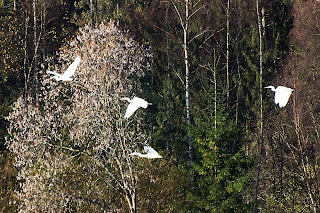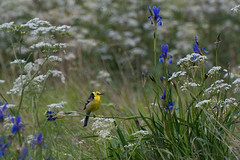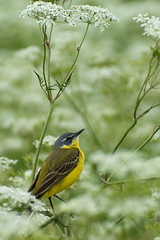The world population of Bewick's Swans is currently estimated at 17 000 individuals. Nearly all of them are supposed to pass Estonia during the migration (at least that is also the number of Bewicks Swans counted in Estonia), altough some flocks may pass trough Finland and Latvia.

The Bewick's and Whooper Swans are very similar but the bills of Bewick's Swan feature a small, typically rounded patch of yellow, whereas in whooper swans the wedge-shaped patch of yellow extends below the nostril. The differences, sometimes difficult for the beginner are evident in this photo, taken at Ilmatsalu fish ponds (The link (in Estonian) leads to the birdlist and map of the area).

Ilmatsalu is a settlement with fish ponds located between city Tartu and an wilderness area Lower-Pedja. Due to its location it attracts a huge numbers of birds in migration time - especially when some of its ponds are dry and it is easy to get food in the shallow water. In this photo the swans, geese (and even some herons) are on the field - due to the rainy summer a lot of grain remained unharvested.

The white birds in the background of the first photo are Great White Egrets. They used to be rare vagrants in Estonia until recently, but this year one pair attempted to breed (first in Estonia) in Ilmatsalu. In autumn there was massive invasion of egrets to Estonia.

Little Grebe is another rarity in Ilmatsalu. This southern bird has bred really late - it is doubtful, wether this chick was able to fly on Oct.08.

Other more interesting birds in Ilmatsalu in mid-october included Great Gray Shrike, Kingfisher, White-backed Woodüpecker, Smew, Goshawk ...

... and a White-tailed Eagle.
Rein










